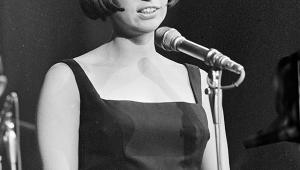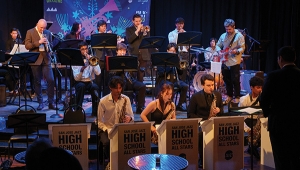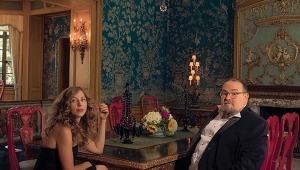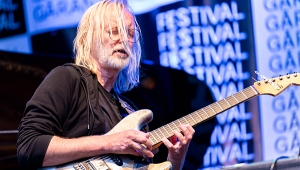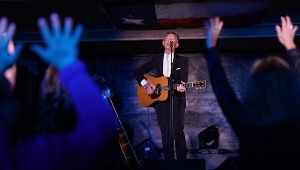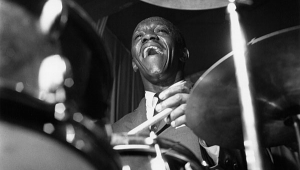| Columns Retired Columns & Blogs |
Yamaha’s Revolutionary AvantGrand Piano
As a musician who has studied of all forms of acoustic and electric keyboard instruments, I have played the gamut of keyboards, from gems to disasters. I think the most significant keyboard developments of the 20th century were the Hammond organ, the Fender Rhodes electric piano, and the Moog synthesizer. These instruments were notable not for their ability to replicate the sound of acoustic instruments, but for the new timbres and textures possible with them, which have since become permanent parts of our musical vocabulary. I have now played an instrument that may prove one of the most significant keyboard designs of the 21st century: the Yamaha AvantGrand N3.

The designers of this hybrid electric/acoustic piano have attempted to replicate the touch and sound of Yamaha's CFIIIS 9' concert grand ($125,000) in a piano one-third the size and one-fifth the price. The AvantGrand N3 looks like a baby grand finished in attractive black lacquer. It has the keyboard and action of a standard acoustic piano, but lift the lid and you see not the usual harp and strings, but an array of drive-units mounted on top of an attractive wooden cabinet. Yamaha has digitally sampled the sounds of the CFIIIS at four separate locations on its soundboard, and the AvantGrand N3's interior incorporates four sets of triamplified drive-units, each set at approximately the same spots on where the concert-grand's samples had been taken. The hammers of the N3's action strike sensors, which trigger the playing of the samples, to mirror the dynamics intended by the pianist.
The AvantGrand N3's three pedals are calibrated to replicate the precise pressure envelope of the pedals of an acoustic piano. Furthermore, a "soundboard resonator" built into the cabinet is triggered by an oscillator to emulate the resonances of an acoustic piano's soundboard. Finally, a Tactile Response System (TRS) reproduces, via two transducers in the soundboard, reverberation throughout the entire instrument that can be felt by the player's feet as they rest on the pedals. Play two bass notes a half-step apart and you feel the beats.
Some bells and whistles are included: the abilities to alter tuning scales, transpose key signature, and to record a performance to hard drive; the file can then be saved to a thumb drive and reproduced by another AvantGrand. In addition to the sound of the CFIIIS grand, harpsichord and electric-piano patches are included.
I played both the AvantGrand N3 and its upright cousin, the N2, and compared their touches and sounds to those of my two references: a 1923 Steinway B 7' grand, restored to as-new condition by Faust Harrison; and the portable rig I use with my jazz quartet, Attention Screen, comprising a Yamaha P60 88-key MIDI controller, a Kurzweil ME-1 synthesizer using the triple-strike Young Chang 9' grand patch, and a Roland KC-550 keyboard amplifier. My main criterion in assembling the latter rig was portability: together, the Yamaha P60 and Kurzweil ME-1 weigh only 32 lbs. In my opinion, however, this gear—which can be heard on Attention Screen's Live at Otto's Shrunken Head (CD, Stereophile STPH020-2)—replicates 80% of the feel and sound of an acoustic grand piano, though, of course, it present the sound as a mono source instead f the spatially distributed source that is a real piano. I felt that the Yamaha AvantGrand N3, tested with a wide range of material, replicated about 95% of the sound of the real thing, and that the feel of its keyboard and pedals were virtually indistinguishable from those of an acoustic. In fact, I'd prefer to play the AvantGrand N3 to most of the grand pianos I've played in my lifetime.
The technology implemented in this instrument is remarkable, flawlessly executed, and with huge potential for not only composers and professional pianists who live in small apartments, but jazz clubs that lack the room for a full concert grand. Stereophile readers will have a chance to hear the AvantGrand N3 for themselves on Saturday evening, April 24, at Yamaha's Artist Services concert hall, in midtown Manhattan, where Attention Screen will perform two sets of wholly improvised jazz—and I'll be playing an N3.
This acoustically excellent space is outfitted with Yamaha's proprietary Active Field Control technology, which uses microphones embedded in the ceiling to pick up reflected sounds, then redistribute the soundfield indirectly via speakers installed in the walls. At intermission, Yamaha executives will talk, and answer questions about the AvantGrand and Active Field Control. The concert, which is open to the public, will be recorded for release on the Stereophile label and concertgoers will receive a discount on the CD when it's released this fall.
The Attention Screen concert will take place at Yamaha Artist Services, Inc. (YASI) Recital Hall at 689 Fifth Avenue (Third Floor—entrance on 54th St.) on April 24 at 7:30pm. Complimentary wine will be served in the intervals. Tickets cost $20 and are available here or by calling (888) 237-0955.
- Log in or register to post comments



